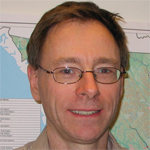He prefers awards from his students, though. “A couple of my trainees have just surpassed me in a few areas,” Dr. Deane says. “I was proud that I was able to participate in their training, allowing them to do that.”
Q: Once you identified rheumatology as an interest, what narrowed your focus to RA? And then further to preclinical identification?
A: The major factor that drove my interest in RA—and in particular preclinical RA—was meeting my mentors, Mike Holers and Jill Norris. I also want to thank all the other researchers and clinicians who have provided me mentorship in preclinical RA. In particular, Chris Striebich, Hani El-Gabalawy, Elizabeth Karlson, Jim O’Dell, Ted Mikuls and Michael Weisman.
Q: What do you see as the future of preclinical identification?
A: I think that preclinical studies are really the next frontier in rheumatology, although to some extent we are already there. I think with the appropriate focus on this area of rheumatic diseases we can make prevention of these diseases a reality in the near future.
Q: How does still being involved in clinical activities help inform your research?
A: It is highly informative to see the people who are affected by this disease, to see the physical manifestations of the disease. Since I am working toward prevention of rheumatic diseases, it really helps to see the whole person and understand not only how a disease affects specific areas of their body, but broader issues, such as how an individual may decide to participate in prevention or a particular approach that they may choose to avoid future disease, for example, taking a pill or making a lifestyle change.
ACR Henry Kunkel Young Investigator Award

Tuhina Neogi, MD, PhD, FRCPC
Associate professor of medicine, Boston University School of Medicine; associate professor of epidemiology, Boston University School of Public Health
Tuhina Neogi, MD, PhD, FRCPC Many rheumatic researchers feel torn between their science and their clinical practice. Not Dr. Neogi.
“I enjoy interacting with patients and the intellectual challenges of figuring out what the underlying problem is and how best to manage it,” she says. “More broadly, it is a privilege to have the opportunity to meet so many different people, learn about their lives, and see if there is something that we can do to help them.”
She has focused those opportunities on osteoarthritis (OA) and gout, including research on the roles of vitamin K and of bone in the pathophysiology of OA, and work on pain mechanisms.



